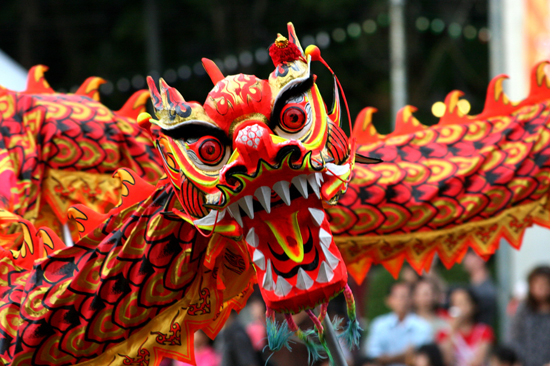Chinese New Year: A Global Celebration
Q&A with Associate Professor and Chair of East Asian Studies Anthony DeBlasi

The Dragon Dance is a traditional part of Chinese New Year Celebrations all over the world.
ALBANY, N.Y. (January 31, 2011) --
February 3rd is Chinese New Year: "the Year of the Rabbit." For more than 1.3 billion people in China and millions more around the world, it is the year's most important holiday. UAlbany Associate Professor and Chair of East Asian Studies Anthony DeBlasi explains the historical significance of Chinese New Year and the importance of the celebration today.
Q: How is the date of Chinese New Year Determined?
A: Its date changes each year and is determined by both the succession of lunar months and the solar year. Chinese New Year reminds us that calendars depend on cultural choices. The astronomical calculations are technical, but a good rule of thumb is that Chinese New Year arrives on the second New Moon after December's Winter Solstice. This year, the second New Moon, and thus New Year, falls on February 3rd. That begins the Year of the Rabbit, the next in the cycle of twelve animals in the Chinese zodiac.
 |
Associate Professor |
Q: What is the historical significance of the day?
A: New Year's significance goes far beyond astronomy. In Chinese, the New Year is the "Spring Festival" (chunjie 春節), marking the beginning of spring and the return of life. People settle the previous year’s affairs by repaying old debts and spring-cleaning. They also make amends for failings. Many believe that just before New Year the Kitchen God that resides in every home makes his annual report to the Jade Emperor in the Heavens.
Q: How is Chinese New Year celebrated today?
A: It is the country's most important celebration, as millions travel from cities back to home towns to celebrate with family, just as people in the United States do during the Holidays. There, with homes decked in red, the feasting dwarfs our Thanksgiving, often lasting two weeks with a different focus each day: dumplings on the 1st, noodles on the 2nd, and so on. Children receive gifts of money in red envelopes. Dragon dances, in which dancers animate a dragon on poles, add to the festivities as do fireworks designed to frighten evil spirits.
Q: What does the future hold for Chinese New Year?
A: China is changing, but enthusiasm for the Spring Festival remains unchallenged. I'll end with the traditional greeting: "Congratulations on your coming prosperity in the New Year" (gongxi facai 恭喜發財)!
![]() For more news, subscribe to UAlbany's RSS headline feeds
For more news, subscribe to UAlbany's RSS headline feeds
Educationally and culturally, the University at Albany-SUNY puts "The World Within Reach" for its 18,000 students. An internationally recognized research university with 58 undergraduate majors and 128 graduate degree programs, UAlbany is a leader among all New York State colleges and universities in such diverse fields as public policy, nanotechnology and criminal justice. With a curriculum enhanced by 300 study-abroad opportunities, UAlbany launches great careers. For more information about this globally ranked University, visit https://www.albany.edu/. For UAlbany's extensive roster of faculty experts, visit www.albany.edu/news/experts.shtml.


